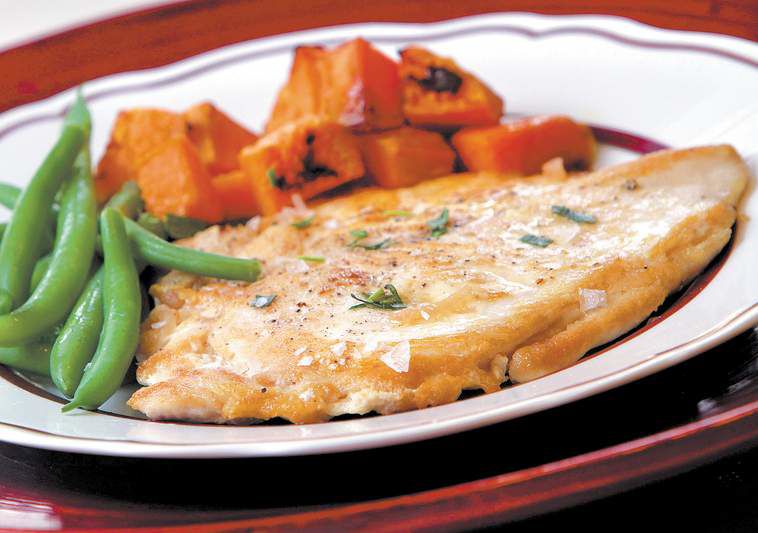Know your salt and use it wisely when in the kitchen
Published 4:00 am Tuesday, March 1, 2011

- Salt is a critical ingredient in the kitchen and can be used to bring out the taste of chocolate or just give a dish a little extra bite and edge. Here flake salt is used to top chicken paillard with tarragon.
A few years ago I picked up a 1-pound package of salt at a gourmet store. When the cashier rang it up, I was shocked: $30.
“You’ve made a mistake,” I protested. “This is just salt.”
“This fleur de sel just arrived from France,” she replied. “And it’s like no other salt you’ve tasted.” And she was right.
Gourmet or not, salt is irreplaceable in the kitchen, bringing out nuances in all kinds of foods.
I use table salt in baking, but kosher salt is a mainstay in my kitchen for cooking. Both are mined from rock deposits, but kosher salt contains no additives, dissolves quickly and has a wonderful tactile quality.
Sea salt, as the name suggests, is made by evaporating sea water. Here are three popular types:
Sel Gris: From Guerande, on France’s Atlantic coast, it gets its gray color and distinct flavor from minerals in the clay bottom.
Fleur de Sel: Considered the king of salt, it is raked from layers of tiny crystals (“flowers of salt”) that form on ocean ponds in France’s Brittany region. It has a clear, sparkling flavor and is best used sparingly on foods just before serving.
Maldon: Made in England by boiling sea water, this delicately flavored finishing salt has distinctive crystals that look like tiny pieces of shaved ice.






